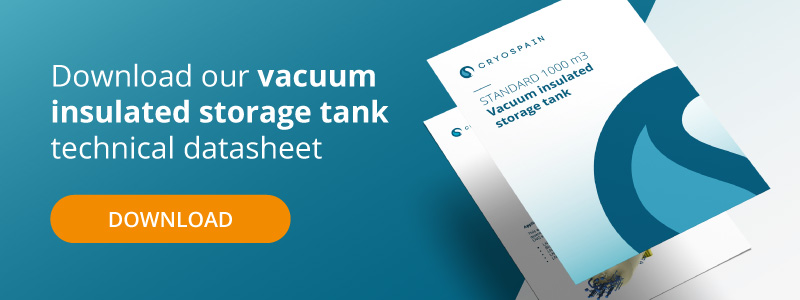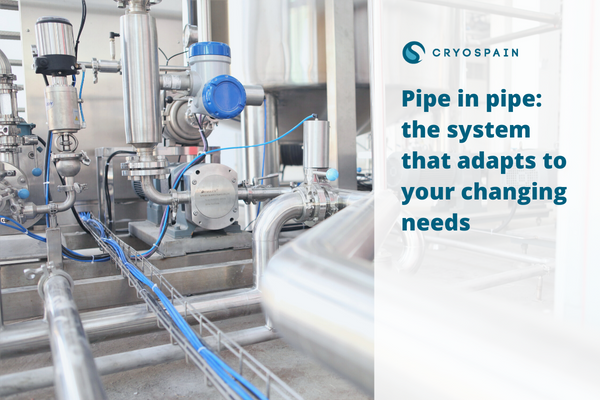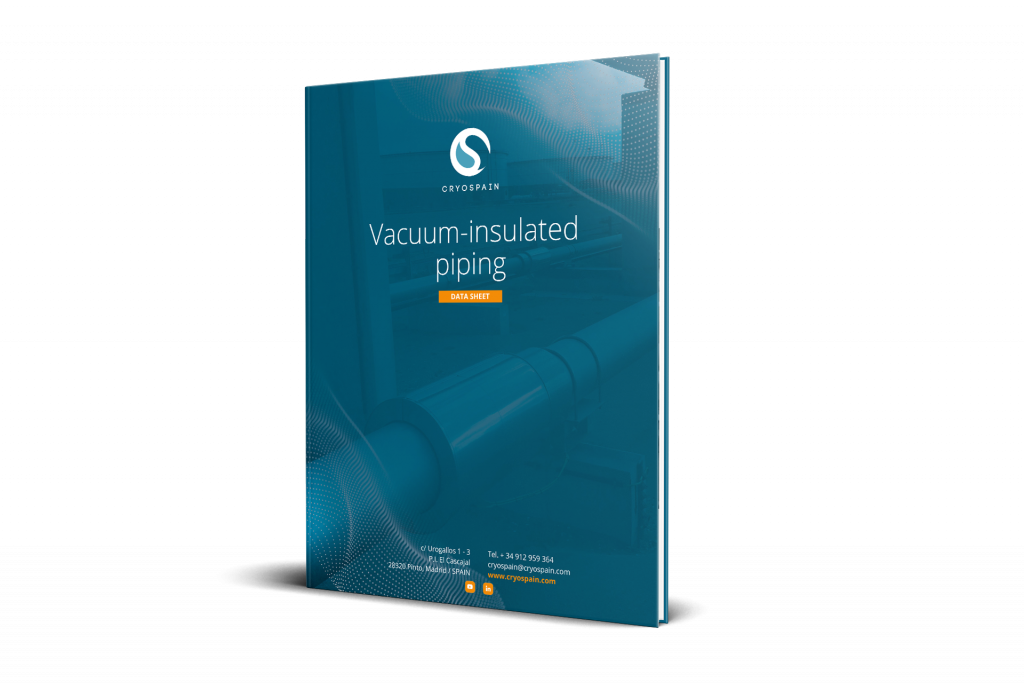Pipe in pipe (PiP) systems have turned into fundamental pipe solutions for the transportation of technical fluids across many different contexts and industries.
What is a pipe in pipe system?
This system consists of a generic term embracing all types of tubes that present two walls or barriers. These walls can be metallic, plastic or made of fibres and the content between each barrier can also be varied, although it usually consists of an insulating material.
The pipe in pipe system is a typical solution for cryogenic piping or cold piping: a system that allows for the transportation of cryogenic fluids or gases used for diverse industrial applications.
As many technical gases require very low temperatures (around -150°C), these gases and the required installations face a number of unique challenges.
First of all, the need for water vapor in cryogenic piping might cause corrosion, an imbalance of energy consumption and, generally, a decreased performance. Adapted pipe in pipe solutions, presenting satisfactory insulating systems, are thus often the best option for cryogenic pipes.
Also, stress calculation is another critical challenge in the design of cryogenic piping. As these types of systems typically contract or expand as much as several millimeters per meter, this generates significant stress in the materials and systems. In order to solve it, companies must look at decisions such as routing, pipe thickness and different support locations.
Following these considerations, there’s a wide range of possible solutions for cryogenic piping, including piping with a simple wall instead of a pipe in pipe system. For this reason, each installation must be studied on a case by case basis.
Industrial uses
In any case, cryogenic piping systems and inpipe solutions present the following common industrial functions:
- An asset for the chemical and petrochemical manufacturing industry. Depending on where they are installed, these pipes are generally manufactured from steel, copper, alloys or cast iron . The use of plastic is growing nowadays. Reinforced concrete is also used in very large diameter transmission lines.
- Processing of food and beverage products using cryogenic technologies. These are stainless steel pipes that have to meet the highest requirements in terms of hygiene and corrosion resistance to comply with meticulous food manufacturing.
- Subsea installations. Submarine pipelines are used primarily to carry oil or gas, but also to transport water.
- Air separation plants. Since air is a simple mixture, successfully separating them involves liquefying and distilling processes, for which pipe-in-pipe represents the ideal solution.
- LNG powered ships such as cruisers or ferries. A much cleaner choice rather than fuels high in contaminants.
- Hospitals and biotechnical facilities. For example, medical gasses present applications in various healthcare areas, including dentistry, veterinaries, physicians, nursing homes, ambulances, emergency healthcare facilities and medical laboratories, among others.
Benefits of PiP
PiP systems present a number of advantages that make them optimal for the transportation of certain substances:
- Great insulation capabilities: because of their double wall system, pipe in pipe solutions present great insulation performance, so that they help diminish heat losses that could damage the gasses inside or pose a significant risk.
Aside from the applications for cryogenic piping, PiP systems also presents a great resistance to high temperatures.
- Stability, which can be critical for certain contexts like submarine installations.
- Powerful protection: the double coating generated by the outer pipe acts as a significant protection against potential loads that could damage the system. In fact, cryogenic piping may be subject to complex external loads that shouldn’t be ignored as they could cause problems in the long term.
Common materials used in cryogenic pipes
Cryogenic pipes require the use of specific materials and components that allow these systems to properly perform their duties. Among these basic elements there are:
- Flowline (inside) and carrier (outer) pipeline stalks
- Thermal insulation panels
- Centralizers, which consist of nylon rings that allow the pipelines to be concentric and generate thermal insulation.
During the design phase of each project, it’s possible to use specific piping building software, such as AutoPIPE Advanced, the one used by Cryospain on our vacuum-insulated piping designs. This technology allows for teams to use all data available in a simple and efficient way and to make transient load calculations, so that overdesign is avoided and there’s a comfortable safety margin.
Related content: Cryogenic pipes: tips for choosing the right line size
Differences between pipeline and pipe in pipe
The main difference between a standard pipeline and pipe in solutions is that the latter presents two barriers, enabling certain advantages that are often of use for cryogenic substances.
A pipeline usually refers to the piping system in an open area, and is usually used for transmission or distribution. For instance:
- Flow line.
- Export lines/Trunk lines.
- Inter-field lines.
- Product lines.
- Water injection/Gas lift.
PiP applications for the gas industry
The gas industry requires specific PiP solutions for the transportation and storage of this product. Among the applications, there are at least two that stand out:
- Deep and shallow water submarine installations
- Transportation and storage of Liquefied Natural Gas (LNG)
All in all, when overtaking any pipe in pipe design, it’s essential to count with a team of professionals that can analyze the specific needs of the project and, according to their expertise, provide advice on which materials and systems are the most adequate.
Learn more by talking to our cryogenic engineers at Cryospain or download our cryolines reference list:













 Contacte-nos
Contacte-nos